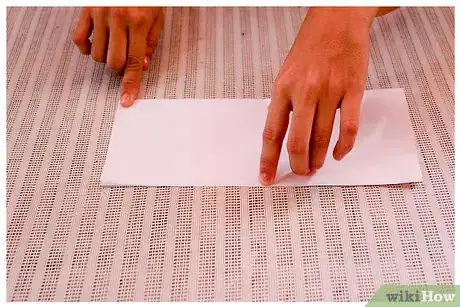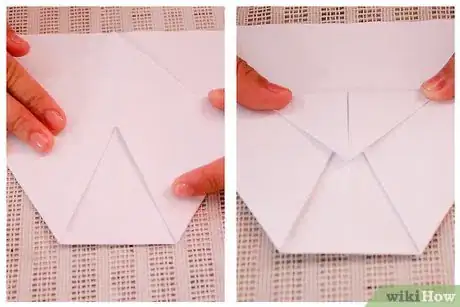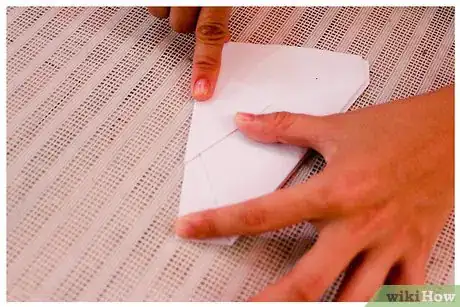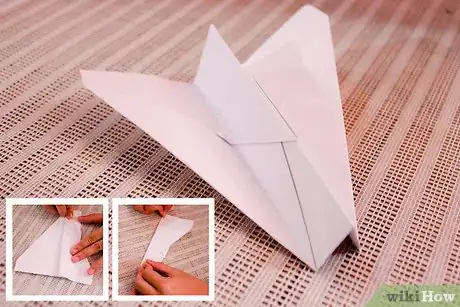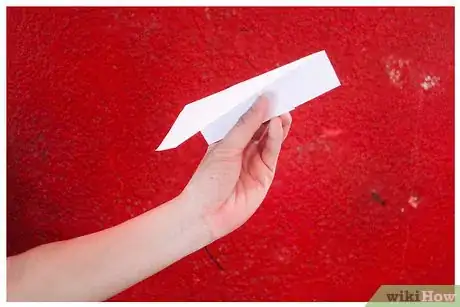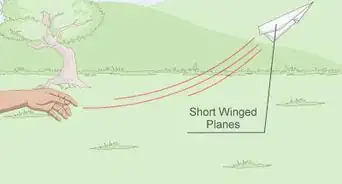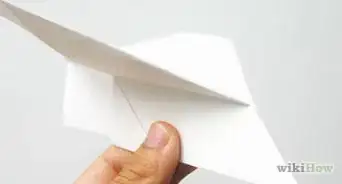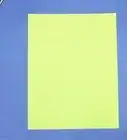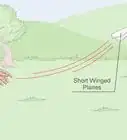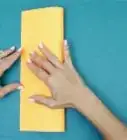X
wikiHow is a “wiki,” similar to Wikipedia, which means that many of our articles are co-written by multiple authors. To create this article, 38 people, some anonymous, worked to edit and improve it over time.
This article has been viewed 139,970 times.
Learn more...
This is how you make an amazing paper airplane called "The Nakamura Lock." Don't throw it too far. You just want to give it a slight, light push straight ahead of you. Then let it go. If your folds are exact, your plane will go up to 80 feet (24.4 m).
Steps
-
1Fold a piece of paper in half and crease it. Open it back up (hot dog style).
-
2Fold the top 2 corners down so that there's a triangle above.Advertisement
-
3Fold the triangle to the bottom.
-
4Fold the top corners down to a point in the middle of the triangle and fold the bottom of the triangle over the corners that were folded down.
-
5Fold it in half. If you fold it in half the right way, you should see a triangle in the middle on both sides.
-
6Fold the top edge to the bottom edge on one side. Do the same on the other side. It'll be one of the best airplanes you've ever made.
-
7To fly it, give it a super light push. If you push too hard, it won't fly but you and the plane will stay AWESOME!
Advertisement
Community Q&A
-
QuestionHow do I hold my Nakamura lock paper airplane?
 Community AnswerHold it on the "lock" part at the middle and throw with moderate power to make it fly.
Community AnswerHold it on the "lock" part at the middle and throw with moderate power to make it fly. -
QuestionWhy do I need to fold the top edge and the bottom edge after I make the triangle?
 Community AnswerIt improves the weight distribution for optimal flying conditions, as well as maximizes structural integrity.
Community AnswerIt improves the weight distribution for optimal flying conditions, as well as maximizes structural integrity. -
QuestionWhy doesn't the Nakamura have a pointy nose?
 Community AnswerThe way the paper is folded in making a Nakamura airplane does not allow it to have a pointy nose. This is an advantage as you don't have to fix it every time the plane crashes into something.
Community AnswerThe way the paper is folded in making a Nakamura airplane does not allow it to have a pointy nose. This is an advantage as you don't have to fix it every time the plane crashes into something.
Advertisement
References
- http://www.exploratorium.edu/exploring/paper/airplanes.html (for a diagram of this same project}
About This Article
Advertisement
